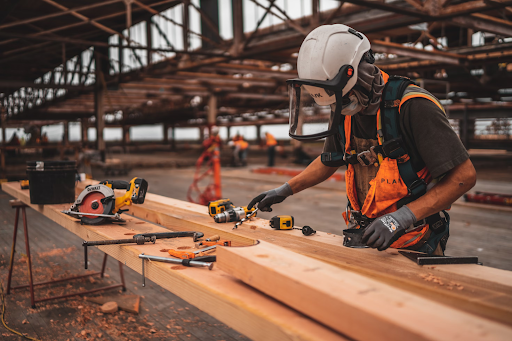Innovations in Construction Methods Shaping the Future
The construction industry, a cornerstone of global development, is undergoing a transformative shift. Faced with the dual pressures of escalating environmental concerns and the relentless march of urbanisation, the sector finds itself at a crossroads. The need for innovation has never been more acute, with sustainability, efficiency, and technological advancement emerging as key drivers of change. This exploration delves into the innovative construction methods that promise to redefine the industry, offering a glimpse into a future where buildings are not just constructed but engineered for a better world.
The Urgent Need for Innovation in Construction
A startling statistic casts a shadow over the construction industry: its significant contribution to global carbon emissions. This fact alone underscores the pressing need for a paradigm shift towards more sustainable and efficient construction methods. The industry’s traditional reliance on resource-intensive processes is no longer tenable in the face of mounting environmental challenges and the urgent call for sustainability.
Innovation in construction is not merely a matter of adopting new technologies; it’s about reimagining the very foundations of how we build. The themes of sustainability, efficiency, and technological advancement are not just buzzwords but essential pillars that will support the industry’s evolution. As Joao Buzio aptly notes, “The construction industry has often taken a cautious approach to technology adoption. However, companies are increasingly changing their mindset regarding the adoption of new technologies.” This mindset shift is crucial for the industry to meet the demands of the 21st century and beyond.
Exploring the Potential and Limits of 3D Concrete Printing
Among the most promising innovations in construction is 3D concrete printing, a technology that stands to revolutionise the way we build. By allowing for the layer-by-layer construction of structures, 3D printing offers unprecedented architectural flexibility, reduced waste, and the potential for significant cost savings. The technology’s precision and efficiency could well herald a new era in construction, where bespoke designs become the norm rather than the exception.
However, the road to widespread adoption of 3D concrete printing is fraught with challenges. High initial costs and scalability issues loom large, posing significant barriers to entry for many firms. Yet, pioneers like Alex Rutherford at Multiplex are demonstrating the technology’s vast potential, navigating these challenges with innovative solutions. Rutherford’s work underscores the importance of perseverance and creativity in overcoming the practical hurdles that new technologies often face.
Harnessing AI for Smarter Construction
Artificial Intelligence (AI) is another frontier in the construction industry’s quest for innovation. With its ability to process vast amounts of data and learn from it, AI is transforming project management, design, and even on-site safety protocols. Predictive analytics, for instance, can foresee maintenance needs, while AI-driven tools streamline project timelines and budgets, ensuring more efficient and safer construction sites.
Helen Nguyen, the visionary behind BuildTech Innovations, has been instrumental in harnessing AI for smarter construction. Her projects exemplify how AI can not only optimise construction processes but also significantly enhance safety standards. Nguyen’s work is a testament to the transformative power of AI in construction, paving the way for a future where technology and human expertise converge to create safer, more efficient building practices.

The Future is Green: Sustainable Building Materials
The shift towards sustainability has also spurred innovation in construction materials. Self-healing concrete and bioplastics are at the forefront of this movement, offering a glimpse into a future where construction materials not only reduce the industry’s carbon footprint but also enhance the durability and longevity of buildings. These materials represent a significant step forward in the industry’s quest for sustainability, promising to reduce maintenance needs and, by extension, the environmental impact of construction projects.
The real-world applications of these materials are already showcasing their potential to revolutionise the industry. By integrating sustainable materials into construction projects, builders can achieve not only environmental benefits but also significant cost savings over the lifespan of a building. This shift towards green materials is a critical component of the industry’s broader move towards sustainability, highlighting the role of innovation in building a more sustainable future.
Navigating New Frontiers: Certification and Compliance
As the construction industry embraces new methods and materials, the landscape of building certification and compliance is also evolving. This dynamic environment requires professionals who can adeptly navigate the complexities of certification and compliance, ensuring that innovative projects meet all necessary standards. Kyrillos Ghaly, Director at Building Certifiers Pty Ltd, exemplifies the expertise needed in this changing landscape. With a deep understanding of building certification and compliance, Ghaly plays a crucial role in facilitating the adoption of innovative construction methods, bridging the gap between innovation and regulatory compliance.
The evolving nature of construction methods underscores the importance of professionals like Ghaly, who can manage the intricacies of certification and compliance. As the industry continues to innovate, the role of such experts will become increasingly vital, ensuring that progress in construction is matched by advancements in regulatory standards. This balance is essential for the sustainable growth of the industry, allowing innovation to flourish within a framework of safety and quality.
Modular Construction: A Solution to Housing Crises?
Modular and prefabricated construction methods are gaining traction as solutions to the global housing shortage and urbanisation challenges. By building components in a factory setting and assembling them on-site, these methods offer significant advantages in terms of speed, cost, and environmental impact. This approach not only streamlines the construction process but also reduces waste and energy consumption, aligning with the industry’s sustainability goals.
The potential of modular construction to address housing crises is immense. By significantly reducing construction times and costs, modular methods can help meet the urgent demand for affordable housing in rapidly growing urban areas. However, widespread adoption faces challenges, including regulatory hurdles and industry resistance to change. Overcoming these obstacles is crucial for realising the full potential of modular construction in solving housing shortages.
Despite the challenges, the benefits of modular construction are compelling. As the industry continues to explore and refine these methods, the potential for positive impact on urban development and housing availability is significant. With continued innovation and adaptation, modular construction could play a key role in addressing some of the most pressing challenges facing cities around the world.
Smart Buildings: The Role of IoT in Modern Construction
The integration of the Internet of Things (IoT) into construction is ushering in an era of smart buildings, which offer unprecedented levels of energy efficiency, security, and comfort. IoT technologies enable buildings to adapt to their occupants’ needs, optimising energy use and enhancing the overall living and working experience. This shift towards intelligent infrastructure is a cornerstone of the construction industry’s future.
Smart buildings leverage IoT devices to monitor and control various systems, from lighting and heating to security and air quality. This connectivity not only improves the efficiency of these systems but also provides valuable data that can inform future improvements. The benefits of smart buildings extend beyond individual projects, contributing to the broader goals of sustainable urban development and energy conservation.
The impact of IoT technologies on construction is profound, with real-world applications demonstrating their potential to transform the industry. As more projects incorporate IoT solutions, the construction of smart buildings is becoming a standard practice, paving the way for a future where buildings are not just structures but dynamic environments that enhance the quality of life for their occupants.
Overcoming Barriers: The Path to Widespread Adoption
While the construction industry is making strides in adopting innovative methods and technologies, several barriers hinder widespread adoption. These challenges range from regulatory hurdles and industry resistance to the high costs of new technologies. However, the industry is finding innovative solutions to these obstacles, fostering an environment where change is not just possible but inevitable.
Collaboration between industry stakeholders, including builders, regulators, and technology providers, is key to overcoming these barriers. By working together, the industry can address regulatory challenges, reduce the costs of new technologies, and foster a culture of innovation. This collaborative approach is essential for the construction industry to fully embrace the potential of new methods and materials.
The path to widespread adoption of innovative construction methods is paved with challenges, but the industry’s determination to overcome these obstacles is clear. With the right strategies and a commitment to collaboration, the construction industry can surmount these barriers, unlocking a future of efficiency, sustainability, and innovation.
Innovative Projects Leading the Way
Across the globe, innovative construction projects are setting new standards for what is possible in the industry. These projects, ranging from 3D-printed buildings to AI-powered construction management, showcase the tangible benefits of embracing new technologies and methods. Each project serves as a beacon, illuminating the path forward for the industry and demonstrating the practical applications of innovation.
These case studies not only highlight the achievements of individual projects but also provide valuable lessons for the broader industry. By examining the successes and challenges of these pioneering endeavours, construction professionals can gain insights into how to effectively implement new technologies and methods in their own projects. This exchange of knowledge is crucial for accelerating the industry’s transformation.
The narrative of these innovative projects ties back to the overarching themes of this article, underscoring the importance of embracing change in the construction industry. By showcasing the real-world impact of new technologies and methods, these case studies inspire confidence in the industry’s ability to innovate and adapt, paving the way for a future where construction is more efficient, sustainable, and responsive to the needs of society.
Looking Ahead: The Evolution of Construction
As we look to the future, the construction industry stands on the brink of a transformative era. The innovations discussed in this article, from 3D concrete printing to smart buildings, are just the beginning of what’s possible. With continued technological advancements and a commitment to sustainability, the industry is poised to redefine itself, offering solutions to some of the most pressing challenges of our time.
The role of technology in construction is evolving, with each innovation bringing us closer to a future where buildings are not just constructed but engineered for efficiency, sustainability, and adaptability. This journey is not without its challenges, but the potential rewards for society, the environment, and the industry itself are immense. As we embrace these changes, the construction industry can look forward to a future that is not only more sustainable but also more responsive to the needs of a rapidly changing world.
In this dynamic landscape, one question looms large: How will technology continue to shape the future of construction? As we ponder this question, it’s clear that the possibilities are as vast as our collective imagination and determination to innovate. The journey ahead is filled with potential, and the construction industry is well-positioned to lead the way in building a better, more sustainable future for all.



